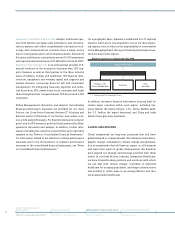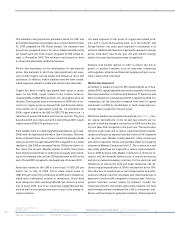Siemens 2009 Annual Report Download - page 143
Download and view the complete annual report
Please find page 143 of the 2009 Siemens annual report below. You can navigate through the pages in the report by either clicking on the pages listed below, or by using the keyword search tool below to find specific information within the annual report.-
 1
1 -
 2
2 -
 3
3 -
 4
4 -
 5
5 -
 6
6 -
 7
7 -
 8
8 -
 9
9 -
 10
10 -
 11
11 -
 12
12 -
 13
13 -
 14
14 -
 15
15 -
 16
16 -
 17
17 -
 18
18 -
 19
19 -
 20
20 -
 21
21 -
 22
22 -
 23
23 -
 24
24 -
 25
25 -
 26
26 -
 27
27 -
 28
28 -
 29
29 -
 30
30 -
 31
31 -
 32
32 -
 33
33 -
 34
34 -
 35
35 -
 36
36 -
 37
37 -
 38
38 -
 39
39 -
 40
40 -
 41
41 -
 42
42 -
 43
43 -
 44
44 -
 45
45 -
 46
46 -
 47
47 -
 48
48 -
 49
49 -
 50
50 -
 51
51 -
 52
52 -
 53
53 -
 54
54 -
 55
55 -
 56
56 -
 57
57 -
 58
58 -
 59
59 -
 60
60 -
 61
61 -
 62
62 -
 63
63 -
 64
64 -
 65
65 -
 66
66 -
 67
67 -
 68
68 -
 69
69 -
 70
70 -
 71
71 -
 72
72 -
 73
73 -
 74
74 -
 75
75 -
 76
76 -
 77
77 -
 78
78 -
 79
79 -
 80
80 -
 81
81 -
 82
82 -
 83
83 -
 84
84 -
 85
85 -
 86
86 -
 87
87 -
 88
88 -
 89
89 -
 90
90 -
 91
91 -
 92
92 -
 93
93 -
 94
94 -
 95
95 -
 96
96 -
 97
97 -
 98
98 -
 99
99 -
 100
100 -
 101
101 -
 102
102 -
 103
103 -
 104
104 -
 105
105 -
 106
106 -
 107
107 -
 108
108 -
 109
109 -
 110
110 -
 111
111 -
 112
112 -
 113
113 -
 114
114 -
 115
115 -
 116
116 -
 117
117 -
 118
118 -
 119
119 -
 120
120 -
 121
121 -
 122
122 -
 123
123 -
 124
124 -
 125
125 -
 126
126 -
 127
127 -
 128
128 -
 129
129 -
 130
130 -
 131
131 -
 132
132 -
 133
133 -
 134
134 -
 135
135 -
 136
136 -
 137
137 -
 138
138 -
 139
139 -
 140
140 -
 141
141 -
 142
142 -
 143
143 -
 144
144 -
 145
145 -
 146
146 -
 147
147 -
 148
148 -
 149
149 -
 150
150 -
 151
151 -
 152
152 -
 153
153 -
 154
154 -
 155
155 -
 156
156 -
 157
157 -
 158
158 -
 159
159 -
 160
160 -
 161
161 -
 162
162 -
 163
163 -
 164
164 -
 165
165 -
 166
166 -
 167
167 -
 168
168 -
 169
169 -
 170
170 -
 171
171 -
 172
172 -
 173
173 -
 174
174 -
 175
175 -
 176
176 -
 177
177 -
 178
178 -
 179
179 -
 180
180 -
 181
181 -
 182
182 -
 183
183 -
 184
184 -
 185
185 -
 186
186 -
 187
187 -
 188
188 -
 189
189 -
 190
190 -
 191
191 -
 192
192 -
 193
193 -
 194
194 -
 195
195 -
 196
196 -
 197
197 -
 198
198 -
 199
199 -
 200
200 -
 201
201 -
 202
202 -
 203
203 -
 204
204 -
 205
205 -
 206
206 -
 207
207 -
 208
208 -
 209
209 -
 210
210 -
 211
211 -
 212
212 -
 213
213 -
 214
214 -
 215
215 -
 216
216 -
 217
217 -
 218
218 -
 219
219 -
 220
220 -
 221
221 -
 222
222 -
 223
223 -
 224
224 -
 225
225 -
 226
226 -
 227
227 -
 228
228 -
 229
229 -
 230
230 -
 231
231 -
 232
232 -
 233
233 -
 234
234 -
 235
235 -
 236
236 -
 237
237 -
 238
238 -
 239
239 -
 240
240 -
 241
241 -
 242
242 -
 243
243 -
 244
244 -
 245
245 -
 246
246 -
 247
247 -
 248
248 -
 249
249 -
 250
250 -
 251
251 -
 252
252 -
 253
253 -
 254
254 -
 255
255 -
 256
256 -
 257
257 -
 258
258 -
 259
259 -
 260
260 -
 261
261 -
 262
262 -
 263
263 -
 264
264 -
 265
265 -
 266
266 -
 267
267 -
 268
268 -
 269
269 -
 270
270 -
 271
271 -
 272
272 -
 273
273 -
 274
274 -
 275
275 -
 276
276 -
 277
277 -
 278
278 -
 279
279 -
 280
280 -
 281
281 -
 282
282 -
 283
283 -
 284
284 -
 285
285 -
 286
286 -
 287
287 -
 288
288 -
 289
289 -
 290
290 -
 291
291 -
 292
292 -
 293
293 -
 294
294 -
 295
295 -
 296
296 -
 297
297 -
 298
298 -
 299
299 -
 300
300 -
 301
301 -
 302
302 -
 303
303 -
 304
304 -
 305
305 -
 306
306 -
 307
307 -
 308
308 -
 309
309 -
 310
310 -
 311
311 -
 312
312 -
 313
313 -
 314
314 -
 315
315 -
 316
316 -
 317
317 -
 318
318 -
 319
319 -
 320
320 -
 321
321 -
 322
322
 |
 |

55
Managing Board statements, Independent auditors’ report, Additional information
95 Net assets position 97 Report on post-balance sheet date events
98 Risk report
108 Information required pursuant to
§315 (4) HGB of the German Commercial
Code and explanatory report
114 Compensation report
114 Report on expected developments
In addition to the operational performance measures just dis-
cussed, we use several other metrics to assess the economic
success of our business activities. To determine whether a par-
ticular investment is likely to generate value for Siemens, we
use ROCE, net present value or economic value added (EVA).
The latter considers the cost of capital in calculating value cre-
ation, by comparing the expected earnings of an investment
against the cost of capital employed. To measure our liquidity
management, we analyze the net working capital turns of our
operating activities, as well as additions to intangible assets
and property, plant and equipment as a percentage of amorti-
zation and depreciation. For the latter measure, we have set
a target of 95 – 115%.
Capital structure management
We have also adopted a measure for capital structure manage-
ment to complement our operational performance measures.
We seek to optimize our capital structure so that we can better
manage our debt-equity ratio while ensuring both unrestricted
access to debt financing instruments in the capital markets
and our ability to meet scheduled debt service obligations.
Our capital efficiency measure is return on capital employed
(ROCE). This measure assesses our income generation from
the point of view of our shareholders and creditors, who pro-
vide us with capital. ROCE is defined as Income from continu-
ing operations (before interest) divided by average capital em-
ployed. Income from continuing operations (before interest) is
defined as Income from continuing operations (as presented
in the Consolidated Financial Statements) excluding Other in-
terest income (expense), net (as presented in the Notes to
Consolidated Financial Statements) and excluding taxes on
Other interest income (expense), net. Capital employed is de-
fined as Total equity plus Long-term debt plus Short-term debt
and current maturities of long-term debt minus Cash and cash
equivalents, each as presented in the Consolidated Financial
Statements, and plus Liabilities associated with assets classi-
fied as held for disposal minus Assets classified as held for dis-
posal, if relating to discontinued operations and as presented
in the “Notes to Consolidated Financial Statements.” Our goal
is to achieve ROCE in the range of 14 – 16%.
Another operational performance measure is cash conversion
rate (CCR), which shows us how much of our income we are
converting to free cash flow. The calculation of CCR is shown
below. Free cash flow presented in the Notes to Consolidated
Financial Statements is defined as Net cash provided by (used
in) operating activities (continuing operations) minus Addi-
tions to intangible assets and property, plant and equipment
(continuing operations). Our target for CCR is 1 minus our an-
nual organic revenue growth rate.
ROCE (continuing operations)
FY 2009 6.1%
FY 2008 4.8%
Target corridor: 14 – 16%
1 Adjusted by the net of assets classified as held for disposal less liabilities associated
with assets classified as held for disposal.
Income from continuing operations (before interest)
× 100%
Average capital employed
1
B25G010_E
Cash conversion rate (continuing operations)
FY 2009 1.54
FY 2008 3.09
Target: 1 minus revenue growth rate
Free cash flow from continuing operations
Income from continuing operations
B25G011_E
